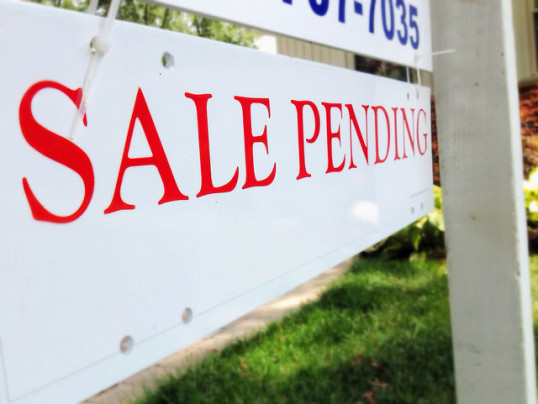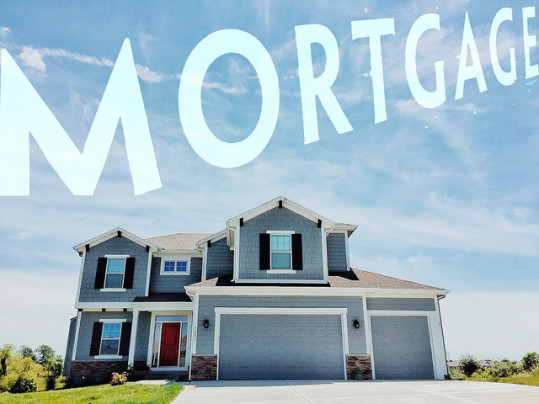When a buyer signs a contract to purchase a home, it is referred to as a pending sale because it usually takes a few weeks before the transaction closes and the house is considered officially sold. Since most of these transactions end in a sold house, the National Association of Realtors tracks them as a way of predicting the number of final sales that will be seen in coming months. In December, the NAR found pending sales up 1.6 percent from the month before. Lawrence Yun, NAR’s chief economist, says the year ended on a high note. “Pending sales rebounded last month as enough buyers fended off rising mortgage rates and alarmingly low inventory levels to sign a contract,” Yun said. “The main storyline in the early months of 2017 will be if supply can meaningfully increase to keep price growth at a moderate enough level for households to absorb higher borrowing costs.” Yun also points out that home sales figures vary depending on the price of the house. For example, sales of homes above $250,000 were up 10 percent over the year before in December. By comparison, sales of homes under $100,000 fell 11.6 percent. This indicates that there are more homes for sale at the higher end of the market than there are at more affordable levels. However, an expected increase in the number of new homes built this year could help balance the market, offering buyers more choices and helping to moderate future price increases on existing homes. More here.
Archive for January 2017
House Payment Less Than Rent In Most Markets
An analysis of data from the U.S. Department of Housing and Urban Development and the Bureau of Labor Statistics found that a monthly house payment – including mortgage, property taxes, and insurance – is more affordable than rent in 66 percent of the 540 counties included in the report. The 2017 Rental Affordability Report, released by ATTOM Data Solutions, shows that buying a house remains an affordable choice for Americans in most markets. Daren Blomquist, senior vice president of ATTOM, says that can change quickly, however. “While buying continues to be more affordable than renting in the majority of U.S. markets, that equation could change quickly if mortgage rates keep rising in 2017,” Blomquist said. “In that scenario, renters who have not yet made the leap to homeownership will find it even more difficult to make the leap this year.” Still, rent is rising faster than home prices in nearly 40 percent of U.S. housing markets, which could make the choice between buying and renting a close call even with higher mortgage rates. To gauge the affordability of renting versus buying, the report compared fair market rent on a three-bedroom property to the monthly house payment on a median-priced home in the 540 counties with more than 900 home sales. More here.
New Home Sales Rose 12.2% Last Year
The number of new homes sold last year was 12.2 percent higher than it was the year before, according to new estimates released by the U.S. Census Bureau and the Department of Housing and Urban Development. The numbers show an estimated 563,000 new homes were sold in 2016, compared to 501,000 one year earlier. Still, much like the recently released existing-home sales data, the report also shows sales slowing at the end of the year. In fact, December sales fell 10.4 percent from November’s estimate. That is likely due to a number of factors, however – including the holiday season, rising mortgage rates at the end of the year, and the natural volatility of month-over-month sales numbers. Despite the December drop, sales still managed to have their best year since 2007 and, with builders recently expressing renewed confidence in the market, this year could see yet another improvement. Also in the report, the median price of a new house sold in December was $322,500; the average sales price was $384,000. Regionally speaking, sales were up in the Northeast but down in the Midwest, South, and West. More here.
Home Buyers Not Deterred By Higher Rates
According to the Mortgage Bankers Association, mortgage rates increased last week but, despite higher rates, so did demand for mortgage loan applications. In fact, the number of Americans requesting applications for loans to buy homes was up 6 percent from the week before, reaching its highest level since last June. Lynn fisher, MBA’s vice president of research and economics, said wage growth may be softening the effects of higher interest rates. “Although it is still early in the home buying season, purchase activity remains on par with a year ago, suggesting that recent wage growth of nearly 3 percent is helping to offset the increase in interest rates,” Fisher told CNBC. “This trend is also consistent with other reports of home buying activity.” Still, higher rates have slowed refinance activity, which was essentially flat from the week before. That may be due to the fact that mortgage rates rose for the first time this month and were up across all loan categories – including 30-year fixed-rate loans with both conforming and jumbo balances, 15-year loans, and loans backed by the Federal Housing Administration. The MBA’s survey has been conducted weekly since 1990 and covers 75 percent of all retail residential loan applications. More here.
Existing Home Sales Have Best Year Since 2006
In 2016, sales of previously owned homes reached their highest level in 10 years, according to new estimates from the National Association of Realtors. A combination of low mortgage rates and an improving economy helped push sales higher than the year before. Still, they remain about 1 million short of where they were in 2006. Lawrence Yun, NAR’s chief economist, says conditions were favorable for most of the year but December sales declined from the month before. “Solid job creation throughout 2016 and exceptionally low mortgage rates translated into a good year for the housing market,” Yun said. “However, higher mortgage rates and home prices combined with record low inventory levels stunted sales in much of the country in December.” In fact, sales were down 2.8 percent from November, though they remain 0.7 percent higher than they were a year earlier. Still, lower-than-normal inventory levels mean prices could continue to see upward pressure unless more homeowners put their homes up for sale or new home construction ramps up this year. Also in the report, home prices rose 4 percent from December 2015 and inventory has now fallen year-over-year for 19 consecutive months. More here.
How You Compare To The Typical Home Seller
The National Association of Realtors’ Profile of Home Buyers and Sellers takes an annual look at the who, what, where, and how of the year’s typical real-estate transaction. Based on a survey sent out across the country, the results reveal things like how much the average home seller made on the sale of their home, how buyers came up with their downpayment, and what types of homes sold, who sold them, and for how much. For example, last year’s typical seller was 54 years old, had been living in their home for 10 years, and had a median income of $100,700. The most commonly cited reason for selling a home was to find something bigger, which was named by 18 percent of respondents. Other common reasons for selling a home included wanting to live closer to friends and family and because of a new job. The majority of sellers didn’t have to offer any incentives in order to attract a buyer for their home and nearly 9 in 10 used a real-estate agent to help sell their house. The typical home seller was able to sell their home for $43,100 more than they purchased it for and got 98 percent of their final listing price. More here.
Housing Outlook Sees Strong Year Ahead
Though there is some uncertainty about how changing economic policies might affect the economy and housing market in the months to come, Fannie Mae’s most recent Economic and Housing Outlook from their Economic & Strategic Research Group sees continued improvement ahead. In short, improved consumer spending, a healthy labor market, and rising wages should continue to support economic growth. But what does this mean for the housing market and real estate this year? Well, according to Doug Duncan, Fannie Mae’s chief economist, the housing market should remain strong and build on last year’s performance. “We expect housing to remain resilient and continue its recovery in 2017, with affordability standing out as the industry’s greatest obstacle, particularly for first-time homeowners,” Duncan said. “Demographic factors, however, are positive. Our research shows that older Millennials have begun to buy homes and close the homeownership attainment gap with their predecessors.” An increasing number of younger buyers is good news for the market, as is the expected bump in new home construction. If the supply of homes for sale can keep up with buyer demand, a better balanced market may help alleviate affordability concerns and lead to favorable housing conditions in 2017. More here.







